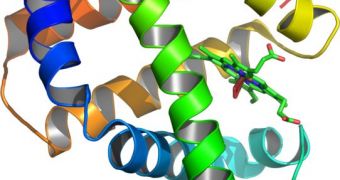Researchers at the Purdue University have recently demonstrated a genetic link between plants and humans. They showed that injecting a protein crucial to cancer development had the ability to revive dying plants, thus making it potentially easier to study the disease in the future. The new investigation was conducted using the aminopeptidase M1 protein (APM1), usually found in plants, and a similar, human protein, called insulin responsive aminopeptidase, or IRAP, PhysOrg reports.
In plants, APM1 is essential for developing strong roots. Individuals that lack this compound will most certainly die, but they can be revived if the appropriate amount of the stuff is injected in them. In a new set of trials, conducted by PU research assistant professor of horticulture Wendy Peer, researchers injected dying plants with IRAP, the human variant of the protein, and obtained the same result – plants were again able to grow roots, and were therefore revived.
“APM1 and IRAP are in the same group. M1 aminopeptidase activity is such a fundamental process that it's been conserved evolutionarily. This protein has changed very little over time,” Peer adds. She is also the author of a new paper detailing the findings, which appears in the early online issue of the respected scientific journal Plant Physiology. “There are more tools available in Arabidopsis to study this class of proteins than are available in animals,” she says
“ This research could be translational and helpful in the animal field or with human health. If humans have changes in these peptidases, they're very sick. Understanding how these proteins work in plants will help us understand how they work in humans,” the expert adds. At this point, the team is focusing on determining exactly how APM1 influences other proteins in plants, and on figuring out precisely which amino-acids in its composition are required in order for it to work properly. The investigation could also bear some implications for how cancer development is understood in humans, given that IRAP plays a role in the development of the disease.

 14 DAY TRIAL //
14 DAY TRIAL //